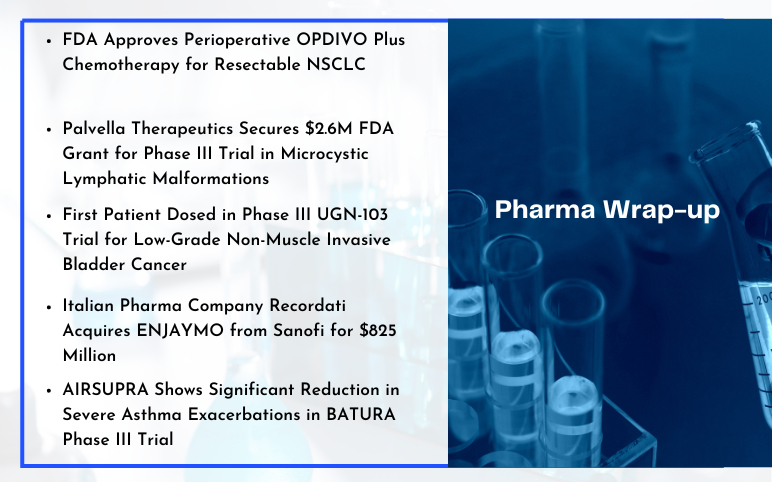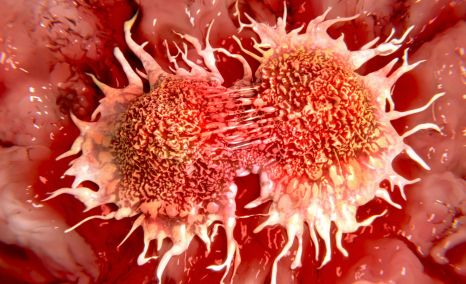Imbalance Between BCG Supply and Increased Demand: The Crisis Impacting Bladder Cancer Treatment
Aug 26, 2024
Table of Contents
The BCG vaccine, a significant medical breakthrough developed in the early 20th century, is derived from a strain of Mycobacterium bovis initially created by the University of Illinois as a vaccine against tuberculosis. For NMIBC, BCG is administered intravesically to reduce the risk of cancer recurrence and progression. Its unparalleled success in this area has made it the gold standard in bladder cancer treatment, particularly for high-risk patients. The TICE strain of BCG, produced by Merck, has been US Food and Drug Administration (FDA) -approved for the treatment of bladder cancer since 1998. Merck is the sole manufacturer and supplier of this critical treatment in the United States and many other countries worldwide (global distribution in 70 countries).
How has the BCG demand outpaced the supply?
The shortage of BCG is multifaceted, stemming from a combination of manufacturing challenges, increased demand, and regulatory pressures. One of the primary factors contributing to the shortage is the complex and time-consuming manufacturing process. BCG production requires a live bacterial culture that must be grown over several weeks in sterile conditions. Any contamination or deviation in the production process can result in the loss of entire batches, leading to significant supply disruptions.
Downloads
Article in PDF
Recent Articles
- Notizia
- Fourth FDA Approval for AbbVie’s Vraylar; FDA Approves Ferring’s Adstiladrin for NMIBC; Merck and...
- OPDIVO Approved for Resectable NSCLC; Palvella Gets $2.6M FDA Grant; First Patient Dosed in UGN-1...
- Seagen/Astellas plans to expand their Antibody Drug Conjugate (ADC), Padcev in additional bladder...
- Roche’s Tecentriq combo proves effective in Bladder cancer
The shortage first became prominent in 2014 when Merck announced supply constraints for the TICE strain of BCG. This marked the second shortage in 3 years, with the previous one occurring when Sanofi announced a shortage of its Connaught strain BCG. Sanofi officially exited the market in 2016, leaving Merck to fill the void and become the primary global supplier. Despite these challenges, the medical community is actively seeking ways to mitigate the impact of the shortage and ensure that patients receive the necessary BCG-unresponsive NMIBC treatment. To address the rising demand, Merck has increased its production capacity by over 100% in recent years, manufacturing between 600,000 and 870,000 vials annually. However, during the height of the shortage, BCG’s use was prioritized for patients with carcinoma in situ (CIS) and high-grade non-muscle invasive urothelial cancers.
In contrast, intermediate-risk patients were treated with intravesical chemotherapy as an alternative. Urologists also adopted strategies such as lower dosages and shared vials among patients to extend the limited supply. Despite these efforts, the shortage persisted for several months. During the COVID-19 pandemic, the demand for BCG in the US decreased. However, it was still greater than supply.
The End Drug Shortages Alliance (2023) estimates that only 69% of the required BCG to treat the patient population over the next five years is currently being manufactured. Consequently, Merck has been rationing BCG supply since 2019, allocating it to distributors and wholesalers based on historical purchasing patterns rather than directly to healthcare providers.
Merck attributed the shortage to several factors, including a single production facility that could not be easily expanded, the lengthy 3-month cultivation period for BCG, and potential contamination issues that halted production. Even with around-the-clock shifts, it took 6–12 months to ramp up production adequately.
The US FDA has also acknowledged the shortage on its Center for Biologics Evaluation and Research website and advised physicians to contact Merck directly for BCG Live. The Bladder Cancer Advocacy Network (BCAN) highlighted that despite Merck’s full production capacity, global demand continued to outstrip supply.
“Despite our best efforts, increasing demand for this medicine globally and, unfortunately, occasional unanticipated issues within the lengthy and complex manufacturing process have led to the demand for TICE BCG to outpace our maximum supply.”
– Merck
“With only a single manufacturer, if something happens in their production process that holds up a batch that puts everyone at risk for a shortage because there is no one else to pick up the slack in production.”
– PharmD, BCOP, senior manager of pharmacy cancer research, and assistant professor of pharmacy at Mayo Clinic
“I think we know the true scope of the problem of how many people are affected, that denominator. I’ve heard anywhere from 30% to 50% of patients just don’t have BCG. And so there’s a lot of things there. And so again, we’ve had a shortage at Northwestern for a very short amount of time, but we’ve been rationing, so we give a third dose, we give a half dose, we coordinate patients.”
– MD, PhD, Urologic Oncologist, Associate Professor of Urology, Northwestern University Feinberg School of Medicine, Jesse Brown VA Medical Center in Chicago
NMIBC treatment recommendations amid BCG shortage
Several organizations, including the American Urological Association (AUA), American Association of Clinical Urologists (AACU), Bladder Cancer Advocacy Network (BCAN), Society of Urologic Oncology (SUO), the Large Urology Group Practice Association (LUGPA), and the Urology Care Foundation (UCF), issued a notice outlining strategies to maximize care for patients with non-muscle invasive bladder cancer (NMIBC) in the context of this shortage. The National Comprehensive Cancer Network (NCCN) Panel Members recommend several strategies to help alleviate problems associated with this shortage.
- BCG should not be used for patients with low-risk disease.
- Intravesical chemotherapy should be used as the first-line option for patients with intermediate-risk NMIBC. Patients with recurrent/multifocal low-grade Ta lesions who require intravesical therapy should receive intravesical chemotherapy such as mitomycin, gemcitabine, epirubicin, or docetaxel instead of BCG.
- If BCG would be administered as second-line therapy for patients with intermediate-risk NMIBC, alternative intravesical chemotherapy should be used rather than BCG in the setting of this BCG shortage.
- High-risk NMIBC, high-grade T1, and CIS patients receiving induction therapy should be prioritized for full-strength BCG. If not available, these patients and other high-risk patients may be given a reduced half to one-third dose, if feasible.
- If supply exists for maintenance therapy for patients with NMIBC, limit BCG dose to 1 year.
- In the event of a BCG supply shortage, maintenance therapy should not be given, and BCG naïve patients with high-risk diseases should be prioritized for induction BCG.
- If BCG is not available, alternatives to BCG such as gemcitabine, epirubicin, docetaxel, valrubicin, mitomycin, or sequential gemcitabine/docetaxel or gemcitabine/mitomycin may also be considered with an induction and possible maintenance regimen.
- Patients with high-risk features (i.e., high-grade T1 with additional risk factors such as concomitant CIS, lymphovascular invasion, prostatic urethral involvement, or variant histology) who are not willing to take any potential oncologic risks with alternative intravesical agents, should be offered initial radical cystectomy if they are surgical candidates.
What is the impact of BCG shortage on the standard of care?
This ongoing shortage of BCG has resulted in patients receiving incomplete treatment courses due to limited supply. This reduction in both induction and maintenance regimens has been clearly linked to an increased risk of tumor recurrence.
In addition, the ongoing shortage of BCG poses difficulties for NMIBC clinical trial enrolment. Several emerging therapies are currently being evaluated in combination with BCG. Enrolling patients in clinical trials for BCG naïve, refractory, or unresponsive segments is impacted by the scarcity of BCG. Ongoing shortage indicates that the availability of non-BCG-based alternative therapies and additional BCG strains should be given top consideration for BCG naïve, high-risk disease.
Strategies and Collaborations to Address the Global BCG Shortage
Efforts to address the BCG shortage crisis are underway, with various stakeholders working towards solutions. Merck announced plans in October 2020 to build a new manufacturing facility in North Carolina. This facility, expected to be completed between late 2025 and late 2026, aims to triple the existing production capacity.
“Merck and the FDA’s Center for Biologics Evaluation and Research are working to mitigate current and future supply constraints.”
Megan McSeveney, press officer with the FDA
According to experts, collaborating with other providers and restricting dosing for certain bladder cancer patients are some strategies that could help manage the current BCG shortage. To find alternative solutions, the National Cancer Institute-supported Southwest Oncology Group (SWOG) is conducting a Phase III trial (NCT03091660) comparing the TICE strain with the Tokyo-172 strain of BCG. This trial also investigates whether an additional intradermal injection of BCG can enhance the immune response to intravesical BCG. In addition to this, according to Verity Pharmaceuticals pipeline, the company is conducting a Phase II trial (US development status) for VERITY-BCG (Strain Russian BCG-I).
“When we talk about the BCG shortage, we are talking about the Tice strain made by Merck. There are plenty of other BCG strains—there are Chinese strains, Russian strains, and there is a BCG vaccine laboratory in India that can make a lot of BCG. Currently, the FDA has not allowed non-FDA-approved BCG strains to be used for treatment in the United States; however, the FDA has allowed the use of different strains in ongoing international studies. For example, Japanese patients can have the Tokyo strain, or patients can get whatever local BCG strain they have as part of the clinical trials. That is a big change for the FDA.”
MD, a professor in the Department of Urology at Rush University Medical Center
Meanwhile, the Serum Institute of India, the world’s largest BCG vaccine manufacturer, has entered into a deal with ImmunityBio. Once the FDA approves the protocols, they plan to supply traditional BCG (Onco-BCG) for clinical trials. Additionally, the Serum Institute of India is developing a recombinant BCG with two gene modifications to improve its efficacy and safety profile. This product is currently undergoing mid-stage testing in Europe, and efforts are underway to expedite the Phase II program. If successful, this recombinant BCG could provide a more reliable and effective alternative to the traditional vaccine, helping to alleviate the shortage and improve patient outcomes.
These initiatives represent significant steps toward addressing the BCG shortage. Ongoing research and new partnerships aim to ensure a stable and sufficient supply of this critical treatment for bladder cancer patients worldwide.
Summary
The global BCG shortage presents a significant challenge for both healthcare providers and patients, particularly those with NMIBC. The shortage has underscored the need for increased production capacity, the development of new strains and alternative NMIBC therapies, and collaborative strategies to manage limited resources effectively. As pharmaceutical companies and research institutions continue to explore innovative solutions, there is hope that the current crisis will lead to the emergence of more effective and accessible treatments for bladder cancer and other diseases that rely on BCG.

Downloads
Article in PDF



